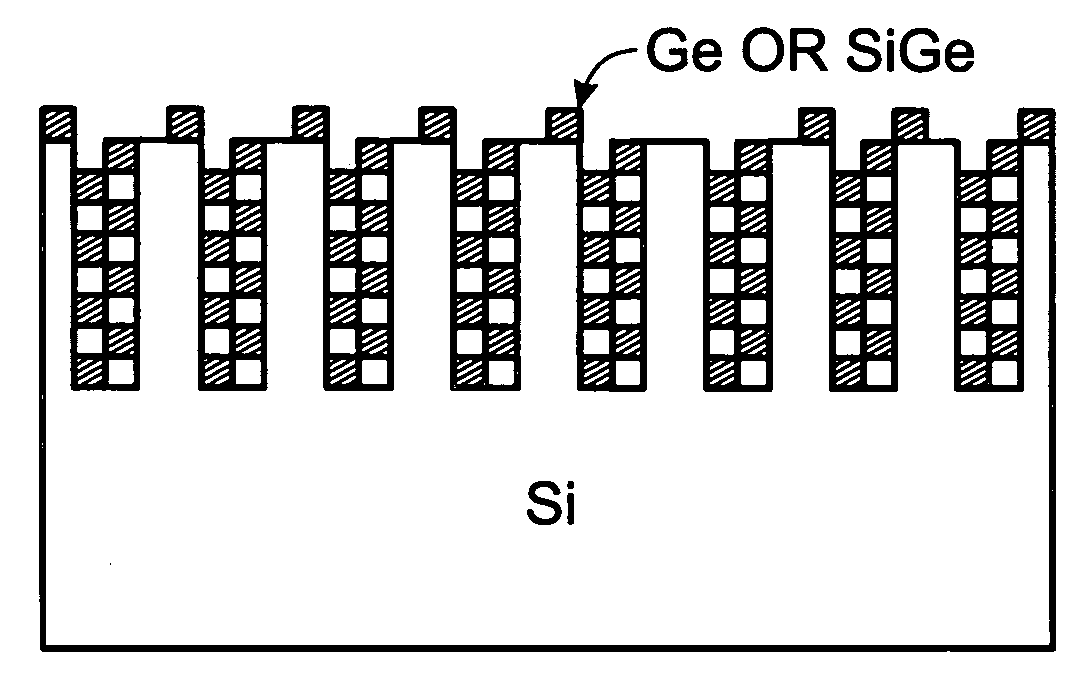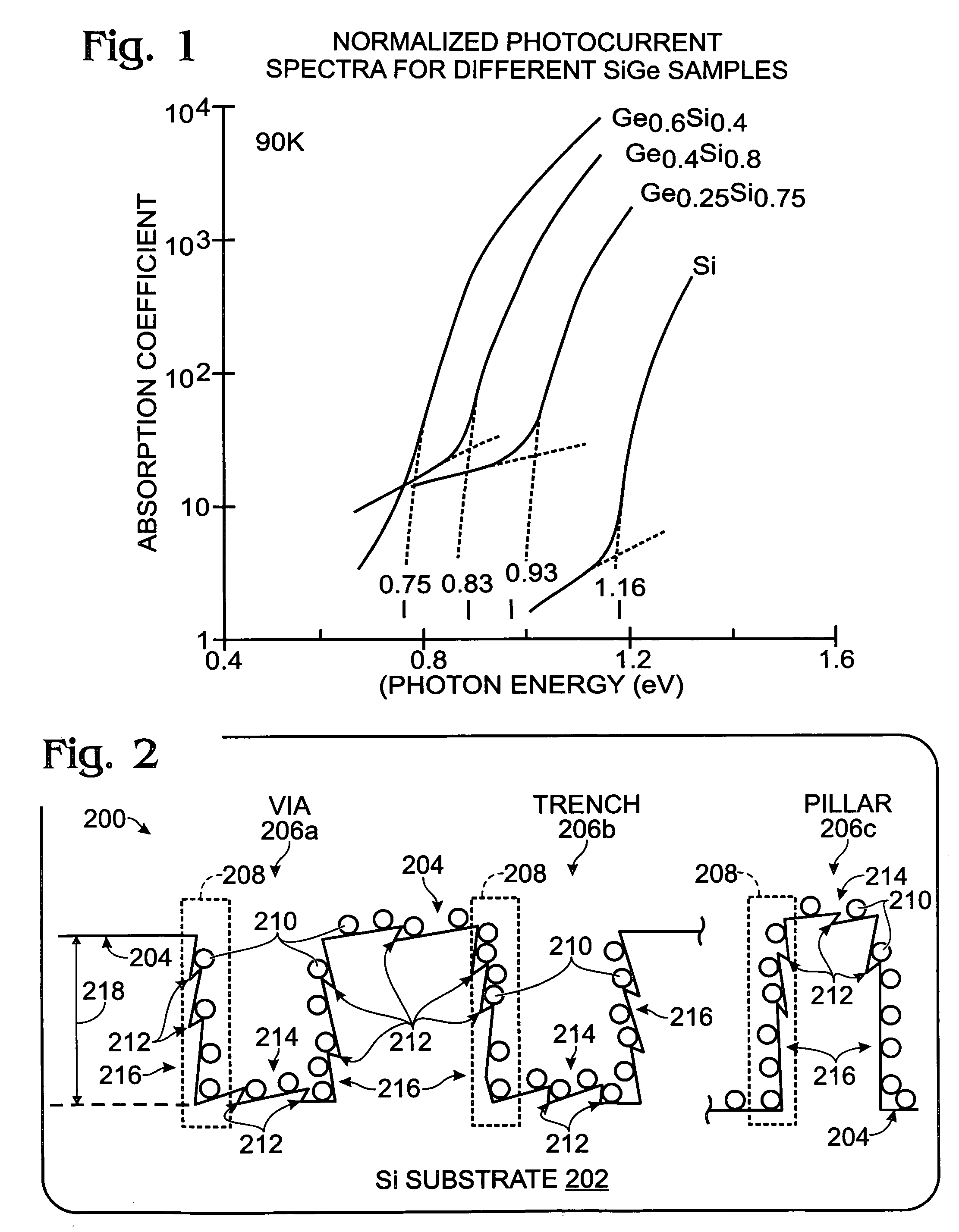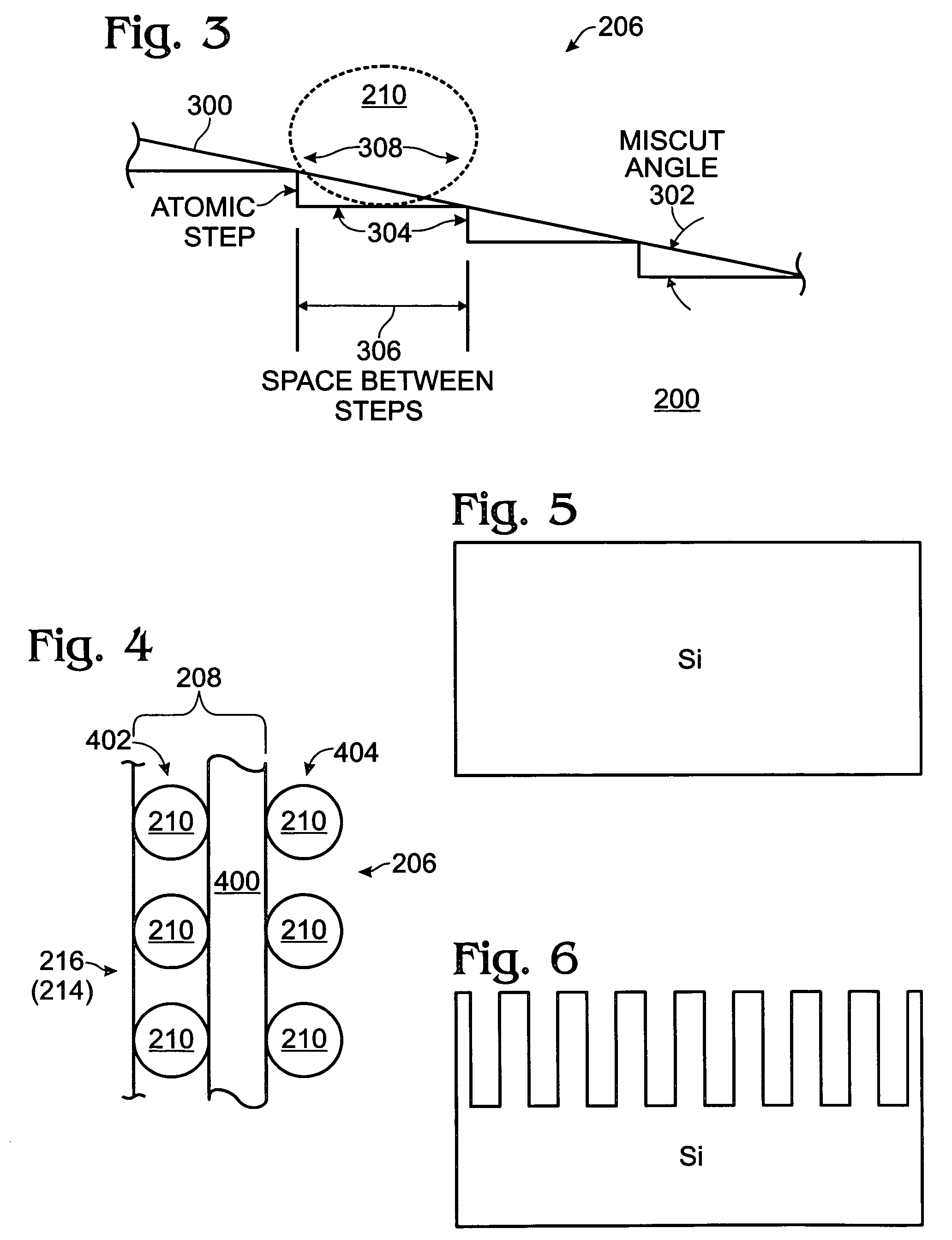Three-dimensional quantum dot structure for infrared photodetection
a quantum dot and optical path technology, applied in the field of three-dimensional quantum dot optical path structure, can solve the problems of inability to accurately detect the location of quantum dots, and inability to produce thin sige film thicknesses, etc., to achieve improved spectral sensitivity and reproducibility, and the effect of precise location and distribution of quantum dots
- Summary
- Abstract
- Description
- Claims
- Application Information
AI Technical Summary
Benefits of technology
Problems solved by technology
Method used
Image
Examples
Embodiment Construction
[0029]FIG. 2 is a partial cross-sectional view of the present invention 3D quantum dot optical path structure for IR photodetection. The structure 200 comprises a single-crystal Si substrate 202 with a surface 204. A Si feature 206 is formed in the Si substrate surface 204. More specifically, a via feature 206a, trench feature 206b, and pillar feature 206c are shown. A 3D optical path 208 with dots 210 of a first material including germanium (Ge) is formed on Si feature.
[0030] The optical path first material dots 210 include a first material of either Ge or SiGe. Alternately stated, the dots have a Ge concentration in the range from 5 to 100%. In one aspect of the structure 200, the Si feature 206 includes defect sites 212. The dots 210 are more likely to form in the defect sites than on the feature sidewalls 216 or feature surfaces 214. The Si feature 206 has a height 218 that is in the range of 0.3 to 5 microns. In other aspects of the invention, the substrate 200 need not single...
PUM
 Login to View More
Login to View More Abstract
Description
Claims
Application Information
 Login to View More
Login to View More - R&D
- Intellectual Property
- Life Sciences
- Materials
- Tech Scout
- Unparalleled Data Quality
- Higher Quality Content
- 60% Fewer Hallucinations
Browse by: Latest US Patents, China's latest patents, Technical Efficacy Thesaurus, Application Domain, Technology Topic, Popular Technical Reports.
© 2025 PatSnap. All rights reserved.Legal|Privacy policy|Modern Slavery Act Transparency Statement|Sitemap|About US| Contact US: help@patsnap.com



